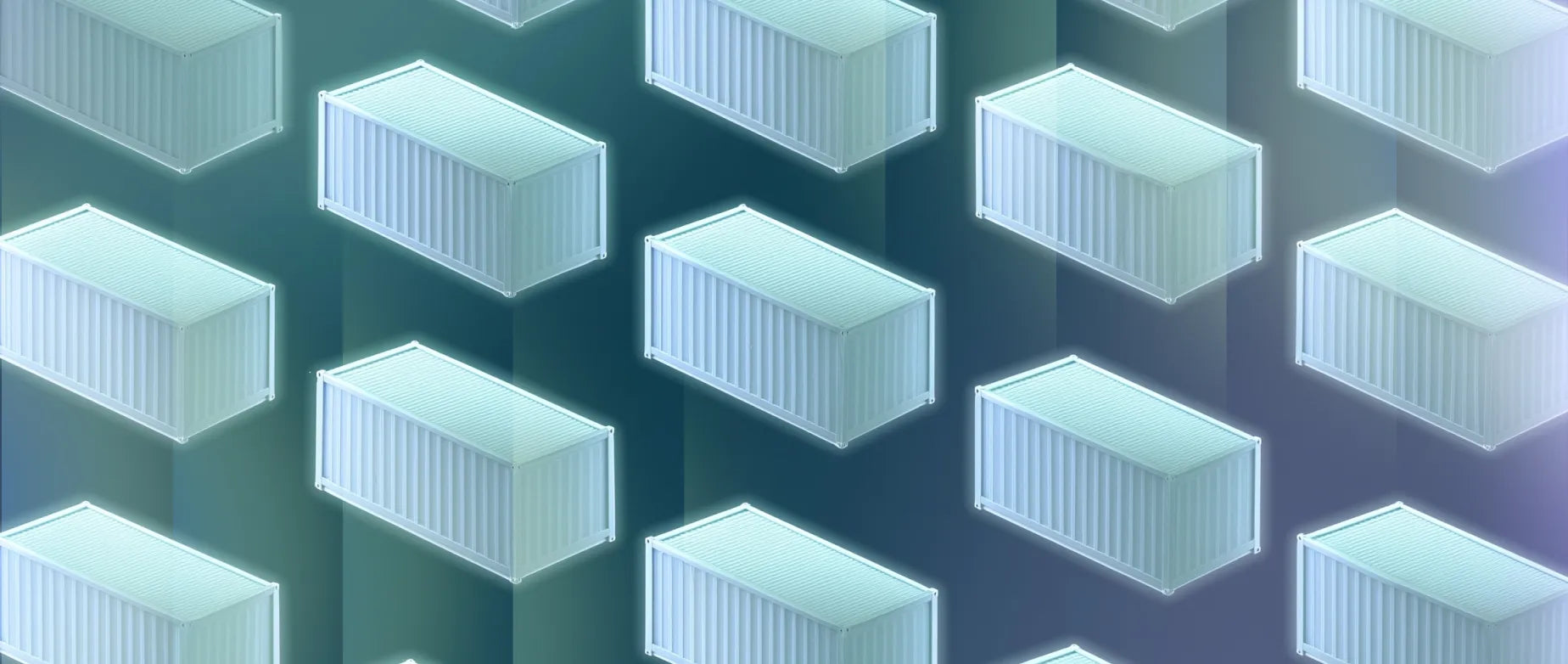
Navigating the Expansive Landscape of B2B Ecommerce: Strategies for Success in a $32 Trillion Market
Table of Contents
- Key Highlights:
- Introduction
- Understanding B2B Products: Definitions and Distinctions
- The Evolution of B2B Products in the Digital Era
- Types of B2B Products for Mid-Market Businesses
- Implementing Effective B2B Strategies
- FAQ
Key Highlights:
- The B2B ecommerce market is a colossal $32 trillion, significantly larger than its B2C counterpart, necessitating tailored strategies for effective engagement.
- Key differences between B2B and B2C products include purchasing motivations, decision-making processes, and fulfillment complexities, demanding distinct approaches for each sector.
- The evolution of B2B products from traditional methods to AI-driven solutions has transformed buyer behaviors, with a substantial increase in self-service transactions expected by 2025.
Introduction
The global B2B ecommerce market has rapidly transformed from a nascent concept into a formidable $32 trillion industry. This evolution represents not only a significant opportunity for businesses but also a critical pivot in how companies engage with one another in a digital-first world. As businesses increasingly recognize the importance of catering to B2B buyers, understanding the nuances of this market becomes paramount. The questions now revolve around effective strategies for navigating this expansive landscape, particularly as the market is projected to outpace traditional B2C channels.
This article delves into the essentials of B2B products, contrasting them with B2C offerings, exploring the evolution of B2B ecommerce, and identifying key product categories that mid-market brands can leverage. With the landscape continuously shifting, businesses that adapt their strategies to meet the needs of B2B buyers will not only survive but thrive.
Understanding B2B Products: Definitions and Distinctions
Business-to-business (B2B) products encompass a broad array of goods and services sold between companies, differing fundamentally from business-to-consumer (B2C) transactions. The complexities of B2B sales stem from the involvement of multiple stakeholders in the purchasing process, each contributing to the final decision.
Key Characteristics of B2B Products
- Multiple Decision-Makers: Unlike B2C transactions where decisions often lie with an individual, B2B purchases typically involve teams from various departments, including procurement, finance, and operations. This collaborative effort can lengthen the sales cycle but enhances the decision-making process.
- Contract-Based Pricing: B2B pricing strategies are often complex, involving volume discounts, minimum order quantities, and tiered pricing structures. This contrasts sharply with the fixed pricing models common in B2C sales, where prices are standardized for all consumers.
- Complex Fulfillment Processes: The fulfillment of B2B orders frequently involves logistics and operations that are more intricate than B2C. This can include palletized shipping, phased deliveries, and the integration of electronic data interchange (EDI) systems to streamline processes.
B2B vs. B2C: Essential Differences
While B2B and B2C products may share surface-level similarities in raw materials or branding, their paths to market diverge significantly. The motivations behind purchases, the complexity of the decision process, and the overall sales cycle vary greatly between the two sectors.
| Feature | B2B Products | B2C Products |
|---|---|---|
| Purchase Motivation | Rational, ROI-driven, addressing business needs | Emotional, fulfilling personal desires |
| Decision Process | Involves multiple stakeholders and formal evaluations | Often impulsive, driven by individual preference |
| Sales Cycle | Longer, focused on relationship-building | Shorter, primarily transactional |
| Pricing Structure | Negotiable, customized for individual clients | Fixed, transparent for all consumers |
| Product Complexity | Higher complexity with extensive documentation | Generally simplified for ease of use |
| Support Expectations | Comprehensive, often with dedicated support teams | Standardized support, often self-service |
| Purchase Volume | Larger quantities, often with repeat orders | Smaller, sporadic purchases |
The Evolution of B2B Products in the Digital Era
The B2B commerce landscape has undergone a seismic shift over the past two decades, transitioning from traditional methods to innovative digital solutions. This transformation can be divided into three distinct waves that have shaped how businesses interact and transact.
Wave One: Catalogue-to-Click
In the early 2000s, B2B commerce began to embrace digital technology. Static PDFs and electronic data interchange (EDI) feeds replaced printed catalogs, allowing companies to place high-value orders online for the first time. This shift marked a pivotal point in the accessibility of B2B products, as businesses started to experience the convenience of online purchasing.
Wave Two: Omnichannel Retail and Marketplaces
The 2010s saw the rise of omnichannel retailing and the establishment of marketplaces. Cloud-based storefronts and punch-out integrations provided procurement teams with enhanced search capabilities, real-time inventory transparency, and competitive pricing. This period emphasized seamless experiences across multiple channels, aligning B2B transactions with the expectations set by B2C ecommerce.
Wave Three: AI-Powered Self-Service
The current wave, spanning from 2020 to 2025, is characterized by the introduction of AI-driven self-service solutions. Businesses are now able to manage complex purchasing processes with unprecedented ease, thanks to generative AI configuration tools and hyperpersonalized buyer journeys. McKinsey's research indicates a notable increase in the willingness of B2B buyers to place significant self-service orders, highlighting a trend towards greater autonomy in purchasing decisions.
For example, Australian tile retailer TileCloud successfully launched a dedicated wholesale storefront utilizing Shopify Plus. By optimizing their platform for B2B transactions, they achieved remarkable results, including a 24% year-over-year growth in B2B customer signups and a 34% increase in average order value. This success underscores the importance of tailored ecommerce solutions that cater to the specific needs of B2B customers.
Types of B2B Products for Mid-Market Businesses
Mid-market businesses, defined as those generating between $10 million and $1 billion in annual revenue, offer a diverse range of B2B products. Understanding the most common categories within this segment is crucial for businesses looking to expand their offerings and tap into new markets.
1. Software and Software-as-a-Service (SaaS) Solutions
One of the primary categories dominating B2B transactions is software, particularly cloud-based SaaS solutions. This sector is expected to continue growing, with Gartner predicting SaaS spending in the U.S. to reach nearly $300 billion by 2025. Companies can offer a variety of SaaS products, including:
- Project Management Platforms: Tools that facilitate collaboration and task tracking.
- Customer Relationship Management (CRM) Systems: Solutions designed to manage customer interactions and data.
- Cybersecurity Subscriptions: Services that protect businesses from digital threats.
- HR and Payroll Software: Systems that streamline human resources processes.
- Accounting and ERP Suites: Comprehensive solutions for financial management and operational efficiency.
- Cloud Storage Solutions: Services that provide businesses with scalable data storage options.
- Marketing Automation Tools: Platforms that enhance marketing efforts through automation.
The key to success in the SaaS market lies in demonstrating return on investment (ROI) through case studies and providing robust onboarding processes.
2. Hardware and Equipment
Alongside software, hardware and equipment also play a vital role in B2B transactions. The global industrial machinery market is projected to grow significantly, driven by advancements in technology and changing buyer preferences. Companies now leverage AI-guided specification searches and integrated freight APIs to streamline the purchasing process, making it easier for businesses to acquire the equipment they need without the traditional hassles of phone quotes and manual processes.
3. Office Supplies and Consumables
Every business requires a variety of office supplies and consumables, making this category a staple in B2B ecommerce. Products range from basic stationery to specialized equipment, and companies can differentiate themselves through competitive pricing and convenient delivery options.
4. Industrial Supplies
Industrial supplies, including tools, machinery parts, and raw materials, represent a significant segment of the B2B market. Businesses in this space often focus on reliability, quality, and the ability to fulfill large orders efficiently.
5. Professional Services
Many mid-market businesses also offer professional services, such as consulting, training, and technical support. These services are critical for companies looking to enhance their operations or implement new technologies. The demand for such services underscores the importance of building strong relationships and establishing trust among clients.
6. Wholesale Products
Wholesale products encompass a broad spectrum of goods sold in bulk to retailers or other businesses. This category allows companies to capitalize on volume sales while providing their customers with competitive pricing.
7. Marketing and Advertising Services
As businesses increasingly recognize the importance of branding and market presence, marketing and advertising services have become essential B2B offerings. Companies can provide a range of services, from digital marketing strategies to creative design, helping clients effectively reach their target audiences.
8. Logistics and Supply Chain Services
Logistics and supply chain management are critical components in the B2B sector. Companies offering these services help streamline the movement of goods, ensuring timely deliveries and efficient operations.
9. Financial Services
Financial services, including payment processing, loans, and investment advice, are crucial for businesses seeking to manage their cash flow and make informed financial decisions. Offering these services can create additional value for B2B clients.
Implementing Effective B2B Strategies
To effectively capture market share in the B2B landscape, businesses must implement strategies that resonate with the unique characteristics of their target audience. Here are some essential strategies for success:
Focus on Relationship Building
The B2B sales process is often characterized by long-term relationships and trust. Companies should prioritize building strong connections with their clients through consistent communication, personalized service, and value-added offerings. By fostering these relationships, businesses can enhance customer loyalty and drive repeat purchases.
Embrace Digital Transformation
As B2B buyers increasingly prefer digital channels for purchasing, businesses must invest in robust ecommerce platforms that support seamless transactions. Integrating AI and automation tools can further streamline processes, enabling companies to provide a more efficient and user-friendly experience.
Customize Offerings
Given the diverse needs of B2B clients, customization is key. Businesses should consider tailoring their products, pricing, and services to meet the specific requirements of different customer segments. This level of personalization can significantly enhance the buying experience and drive customer satisfaction.
Leverage Data Analytics
Data-driven decision-making is crucial in the B2B space. Companies should utilize analytics tools to gain insights into customer behavior, preferences, and purchasing patterns. This information can inform marketing strategies, product development, and inventory management, ultimately leading to improved outcomes.
Invest in Marketing Strategies
Effective marketing is essential for capturing the attention of B2B buyers. Businesses should leverage a mix of digital marketing strategies, including content marketing, search engine optimization (SEO), and social media advertising, to reach their target audience. By creating valuable content and engaging with customers online, companies can enhance their brand presence and attract new clients.
Provide Exceptional Customer Support
As B2B transactions often involve complex products and services, companies must prioritize customer support. Offering comprehensive assistance, including technical support and onboarding resources, can help clients navigate challenges and maximize their investments.
FAQ
What is B2B ecommerce?
B2B ecommerce refers to transactions conducted between businesses, where goods and services are sold from one company to another, often involving complex purchasing processes and multiple decision-makers.
How does B2B differ from B2C?
B2B transactions typically involve rational purchasing decisions motivated by ROI, while B2C purchases are often driven by emotional factors. Additionally, B2B sales cycles are generally longer and more relationship-focused.
What are common types of B2B products?
Common B2B product categories include software and SaaS solutions, hardware and equipment, office supplies, industrial supplies, professional services, wholesale products, marketing services, logistics, and financial services.
How can businesses succeed in the B2B ecommerce market?
To succeed in B2B ecommerce, businesses should focus on relationship building, embrace digital transformation, customize offerings, leverage data analytics, invest in strategic marketing, and provide exceptional customer support.
What trends are shaping the future of B2B ecommerce?
Key trends include the rise of AI-driven self-service solutions, increased digital transactions, and the growing importance of personalized experiences in the B2B buying journey. Companies that adapt to these changes will be well-positioned for success.
POWER your ecommerce with our weekly insights and updates!
Stay aligned on what's happening in the commerce world
Email Address
Handpicked for You

22 August 2025 / Blog
Navigating Customer Experience Trends: Strategies for 2024 and Beyond
Read more
22 August 2025 / Blog
Maximizing Efficiency: A Comprehensive Guide to Customer Service Outsourcing
Read more
22 August 2025 / Blog


